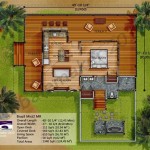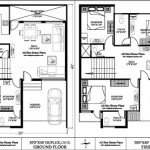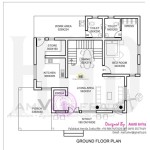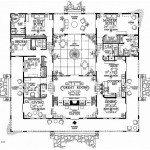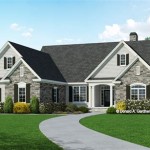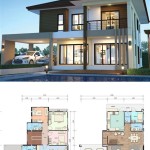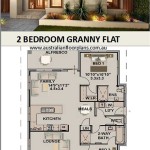Low Energy Small Home Plans: A Guide to Sustainable & Efficient Living
Rising energy costs and growing environmental concerns are driving homeowners to seek more sustainable living solutions. Small homes, inherently requiring less energy to heat and cool, provide an excellent foundation for energy efficiency. Combining smart design principles with cutting-edge technologies can result in dwellings that minimize environmental impact while maximizing comfort and affordability.
Key Considerations for Low-Energy Small Home Design
Several factors contribute to creating a truly low-energy small home. Understanding these elements helps in making informed decisions during the planning and construction phases.
Passive Solar Design: Orienting the home to maximize solar gain in winter and minimize it in summer reduces heating and cooling needs. Large south-facing windows (in the northern hemisphere) allow sunlight to passively heat the home during colder months. Overhangs and strategically placed trees can shade the windows in summer, preventing overheating.
Insulation and Air Sealing: Proper insulation and air sealing are critical for minimizing energy loss. High-quality insulation in walls, roofs, and floors creates a thermal barrier, preventing heat transfer. Thorough air sealing eliminates drafts and leaks, further enhancing energy efficiency.
High-Performance Windows: Energy-efficient windows with low-E coatings and insulated frames minimize heat gain in summer and heat loss in winter. They play a crucial role in maintaining a comfortable indoor temperature while reducing reliance on heating and cooling systems.
Efficient HVAC Systems: Choosing energy-efficient heating and cooling systems is essential for minimizing energy consumption. High-efficiency heat pumps, ductless mini-splits, and geothermal systems offer significant energy savings compared to traditional HVAC systems.
Water Heating: Energy-efficient water heaters, such as tankless water heaters or heat pump water heaters, significantly reduce energy consumption associated with heating water for domestic use. These systems provide hot water on demand, eliminating standby heat loss.
Energy-Efficient Appliances: Selecting Energy Star-certified appliances minimizes energy use for everyday tasks. Refrigerators, dishwashers, washing machines, and dryers contribute significantly to household energy consumption, and opting for efficient models can make a notable difference.
Lighting: LED lighting uses significantly less energy than traditional incandescent bulbs and offers a longer lifespan. Incorporating LED lighting throughout the home is a simple yet effective way to reduce energy consumption.
Popular Low-Energy Small Home Plans
Various pre-designed small home plans incorporate low-energy design principles, offering a starting point for individuals seeking sustainable housing solutions.
Tiny Homes: Tiny homes prioritize minimalism and efficiency. Their small footprint inherently reduces energy needs, and many are designed with features like passive solar design, high-performance insulation, and efficient appliances.
Cottage-Style Homes: Cottage-style homes offer a charming and efficient living space. They often feature compact layouts, maximizing space utilization and minimizing energy consumption. Many cottage plans incorporate sustainable design principles to further enhance efficiency.
Modern Prefab Homes: Prefabricated homes offer a high degree of customization and can be designed to meet specific energy-efficiency goals. Factory construction ensures precise assembly and minimizes material waste, further contributing to sustainability.
Benefits of Choosing a Low-Energy Small Home Plan
Opting for a low-energy small home design offers several advantages, both financially and environmentally.
Reduced Energy Bills: Lower energy consumption translates directly into lower utility bills, offering long-term cost savings. The initial investment in energy-efficient features pays off over time through reduced operating expenses.
Smaller Environmental Footprint: Reduced energy consumption means less reliance on fossil fuels and a smaller carbon footprint. Low-energy homes contribute to a healthier environment and help conserve natural resources.
Increased Comfort and Health: Well-insulated and airtight homes maintain a more consistent indoor temperature, improving comfort and reducing drafts. Improved indoor air quality, due to reduced infiltration of pollutants, benefits respiratory health.
Building Materials for Low-Energy Small Homes
Selecting sustainable and energy-efficient building materials enhances the overall performance of a low-energy home.
Structural Insulated Panels (SIPs): SIPs offer excellent insulation and air sealing, significantly reducing energy loss. They are also strong and durable, contributing to the structural integrity of the home.
Reclaimed Wood: Using reclaimed wood reduces the demand for new lumber, minimizing deforestation and embodied energy. Reclaimed wood adds character and a unique aesthetic to the home.
Bamboo: Bamboo is a fast-growing, renewable resource that offers excellent strength and durability. It can be used for flooring, cabinetry, and other applications in a low-energy home.
Financing Options for Low-Energy Small Homes
Various financing options are available for individuals seeking to build or purchase a low-energy small home.
Green Mortgages: Green mortgages offer favorable terms for homes that meet specific energy-efficiency standards. These mortgages often feature lower interest rates or other incentives.
Energy-Efficient Home Improvement Loans: These loans provide financing for energy-efficient upgrades and renovations, allowing homeowners to improve the energy performance of their existing small homes.
Government Incentives and Rebates: Many local and national governments offer incentives and rebates for building or purchasing energy-efficient homes. These programs can significantly reduce the upfront costs of sustainable housing.

Tiny House Plan Examples

10 Small House Plans With Big Ideas Bob Vila

These Small House Plans Pack A Lot Of Punch Houseplans Blog Com

Little Compton Passive House Zeroenergy Design Inhabitat Green Innovation Architecture Building

Tiny House Plan Examples

Modern Passive Tiny House With Efficient Design

Affordable Home Plan Ch137

Small House Plans Economical Floor

These Small House Plans Pack A Lot Of Punch Houseplans Blog Com

Small House Plans Economical Floor

